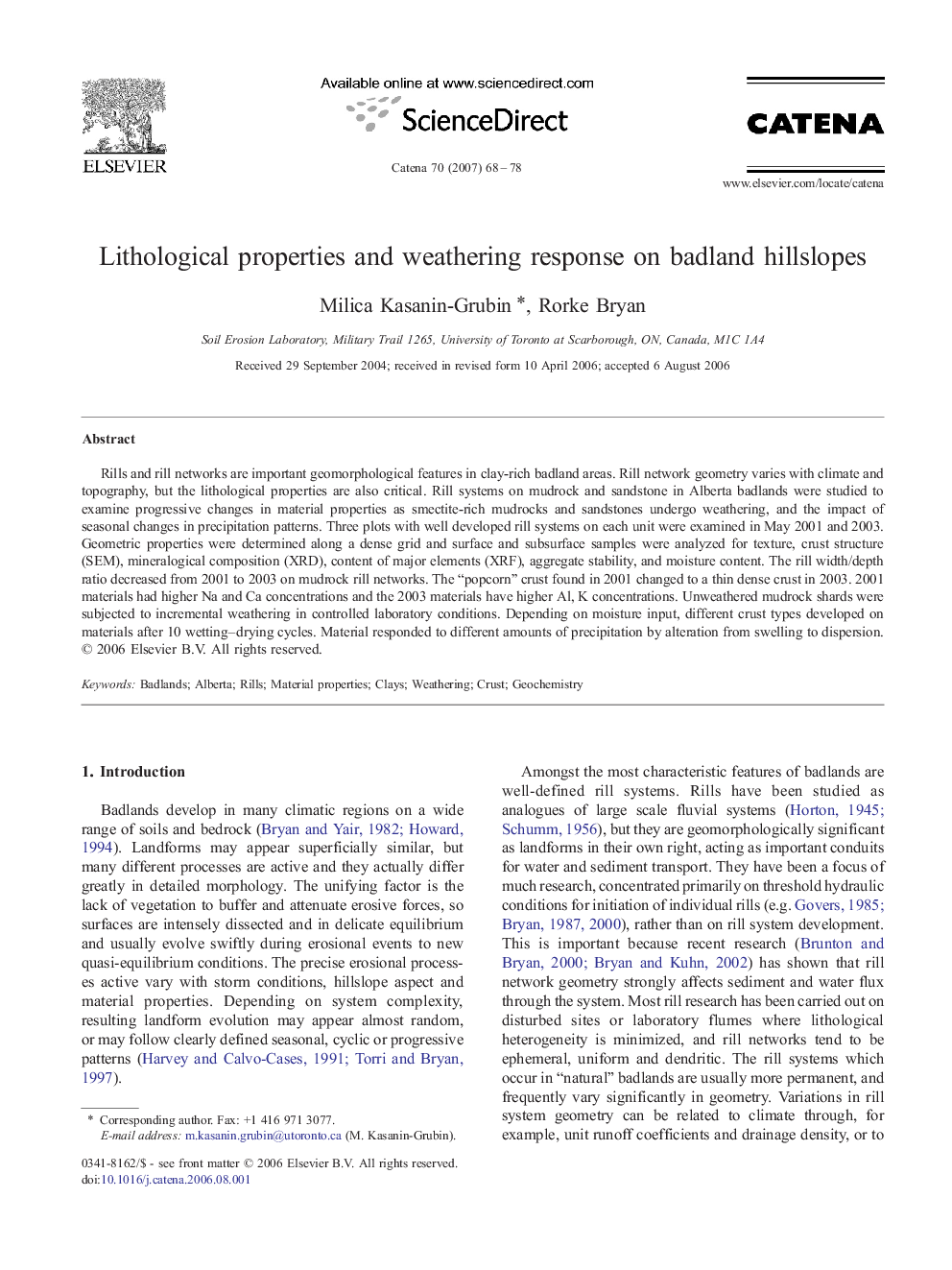| Article ID | Journal | Published Year | Pages | File Type |
|---|---|---|---|---|
| 4572628 | CATENA | 2007 | 11 Pages |
Rills and rill networks are important geomorphological features in clay-rich badland areas. Rill network geometry varies with climate and topography, but the lithological properties are also critical. Rill systems on mudrock and sandstone in Alberta badlands were studied to examine progressive changes in material properties as smectite-rich mudrocks and sandstones undergo weathering, and the impact of seasonal changes in precipitation patterns. Three plots with well developed rill systems on each unit were examined in May 2001 and 2003. Geometric properties were determined along a dense grid and surface and subsurface samples were analyzed for texture, crust structure (SEM), mineralogical composition (XRD), content of major elements (XRF), aggregate stability, and moisture content. The rill width/depth ratio decreased from 2001 to 2003 on mudrock rill networks. The “popcorn” crust found in 2001 changed to a thin dense crust in 2003. 2001 materials had higher Na and Ca concentrations and the 2003 materials have higher Al, K concentrations. Unweathered mudrock shards were subjected to incremental weathering in controlled laboratory conditions. Depending on moisture input, different crust types developed on materials after 10 wetting–drying cycles. Material responded to different amounts of precipitation by alteration from swelling to dispersion.
